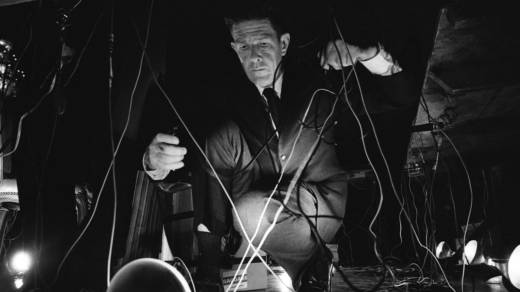In short, the noise phase is a phase many if not all of us go through, as both consumers and creators of art, in which we begin to question orthodoxy and reject authority. It’s when we start to push ourselves towards extremity for extremity’s sake, in the hope that so doing will reveal certain truths, or make possible certain sensations that are unavailable through conventional means. I’d argue, then, that it’s healthy. Necessary, even.
“Noise” and “music,” both aural phenomena, are closely related — but the line separating one from the other is a matter of more debate than one might imagine. Merriam-Webster defines music as the “science or art of ordering tones or sounds in succession, in combination, and in temporal relationships to produce a composition having unity and continuity.” Its second definition, much more straightforward, defines music as “an agreeable sound, euphony.”
Noise is nearly the opposite: it’s a “loud, confused, or senseless shouting or outcry,” or more simply “sound, especially one that lacks agreeable musical quality or is noticeably unpleasant.” (Note the explicit value judgments in the aforementioned definitions.)
“Noise” is a distinctly modern phenomenon. Noises have of course existed since time immemorial; the very first noise was — what else? — the Big Bang, the sound of which scientists have attempted to recreate. But “noise,” as we conceive of it today, with all of its social and even political implications, coincided with the Industrial Revolution, as machines and amplified sound became facts of daily living, especially in populous cities.
It was the Industrial Revolution that paved the way for the Futurists, a wide-ranging group of artists and intellectuals (primarily Italian but also Russian, Belgian, and beyond) active around the turn of the 20th century, whose works unabashedly emphasized motion, speed, dynamism, spectacle, and industry. And it was one Futurist in particular, Luigi Russolo, who wrote a tract (The Art of Noises) that laid the foundation for the elision between “noise” and “music.”
“In the nineteenth century, with the invention of the Machine, Noise was born,” wrote Russolo. “At first the art of music sought purity, limpidity, and sweetness of sound … Today music, as it becomes continually more complicated, strives to amalgamate the most dissonant, strange, and harsh sounds. In this way we come ever closer to noise-sound.”
In this tract, more than 100 years old, Russolo encapsulates the philosophy that I here refer to as “the noise phase.” He continues: “Everyone will acknowledge that all musical sound carries with it a development of sensations that are already familiar and exhausted, and which predispose the listener to boredom … For many years Beethoven and Wagner shook our nerves and hearts. Now we are satiated and we find far more enjoyment in the combination of the noises of trams, backfiring motors, carriages and bawling crowds than in rehearsing, for example, the ‘Eroica’ or the ‘Pastoral.'”
My noise phase began at a relatively young age, spurred by an early interest in electronic and industrial music. With each successive album I discovered and loved, I pushed a little bit further out, testing the limits of my own listening. Without realizing, I was following Russolo, seeking to “continually enlarge and enrich the field of [my own] sounds … [corresponding to] a need in [my] sensibility … [which,] liberated from facile and traditional Rhythm, must find in noises the means of extension and renewal.”
Noise offered to me an extravagance, a purity of feeling and intent, that I could not find elsewhere. Noise was Bartleby’s “I would prefer not to” pantomimed as music. It was my hand over a candle, held for as long as I could. Noise wasn’t “pleasurable” to listen to, but it was unrelenting, unstoppable, and all-encompassing. In its inescapability, I found escape.
And though it lasted for years, it eventually passed. The cloudy angst of my teenage years gave way to the naïve churlishness of young adulthood, and sooner or later I discovered the wonders of pop music. (Thank you, Broken Social Scene.) My own noise phase coincided with some of my most turbulent years, which in hindsight seems by design.
For some, the noise phase is lifelong. Japanese legend Masami Akita, a.k.a. Merzbow, has spent the last 36 years producing just shy of 300 albums, each one a differently hued rumination on noise. And in America — to choose but one example — Massachusetts’ RRRecords, a record store and label led by inveterate weirdo Ron Lessard, has for decades disseminated and propagated works by noise musicians from across the globe to whomever is willing and able to pay their rock-bottom prices.
If you, dear reader, have never had a noise phase of your own, consider what I have written here. Noise, as difficult as it may be, contains infinitudes within it. In closing I leave you with a quote from a veteran purveyor of noise and a philosopher in his own right, the great American artist John Cage:
“If something is boring after two minutes, try it for four. If still boring, then eight. Then 16. Then 32. Eventually one discovers that it is not boring at all.”




